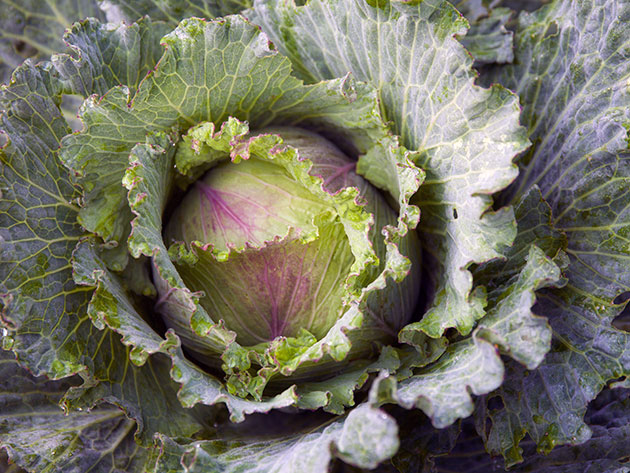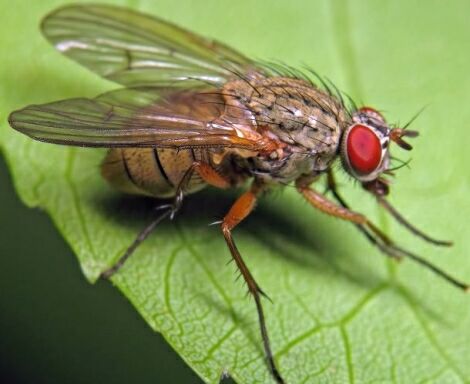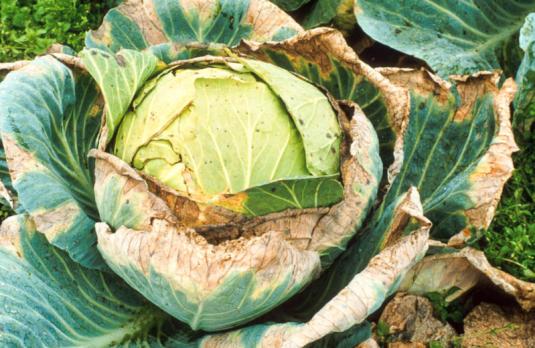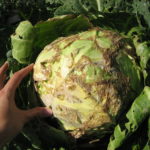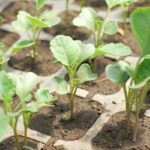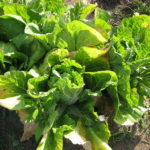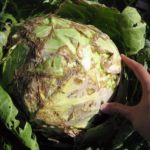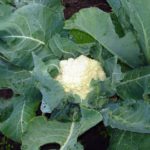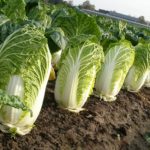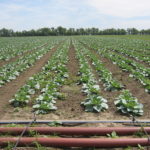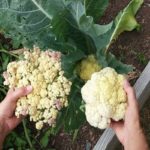Not always, if the foliage turns red or changes its color to a different shade, this is a sign of disease damage to the crop or the appearance of pests on the cabbage, so you need to understand why this is happening.
Causes of red cabbage leaves
In order to grow and develop normally, the crop requires macroelements (nitrogen) and microelements (calcium, magnesium, iron, molybdenum, copper). A lack of one or more nutrients always affects the plant.For example, with a lack of phosphorus in the soil, redness of the leaves is observed.
Why do cabbage leaves turn red if the weather is cool, cloudy, and rainy?
When the air temperature drops, metabolism occurs normally, but the roots do not have time to absorb useful elements, especially phosphorus from the soil. When it rains, phosphorus leaves the soil surface much deeper, and a plant whose roots are located close to the surface cannot reach it.
It is necessary to fertilize the plants with phosphorus. Scatter 2 tbsp per 1 m². spoons of superphosphate or 1 teaspoon of diammonium phosphate. You can sprinkle 1 tbsp. a spoonful of potassium monophosphate per 1 m², since it contains phosphorus.
Instead of these fertilizers, dissolve 0.5 kg of bird droppings, or 1 liter of mullein, or 0.5 kg of ash in a ten-liter bucket of water. Then mix the ingredients, leave the solution for a day to infuse. Pour 0.5 liters of solution under the roots of one plant. After a week, do the same feeding again. If the weather is cool, it is better to cover the plants with film.
If the lower leaves turn blue or red, this is due to a lack of nitrogen. Cabbage stops growing. Very often this happens in bad weather. Then the plants are fed with solutions of ammonium nitrate, urea, and ammonia water.
The leaves changed color and holes appeared in them.
Why did the cabbage leaves change color and get eaten?
This occurs due to pest attacks:
- Damage by cabbage spring fly. Cabbage fly larvae are small, inconspicuous worms that feed on roots. To eliminate the pest, solutions of Rovikurt (0.1%), Tolkord (0.1%), and Anometrine (0.6%) are used.
- The appearance of cabbage scoop.This is a small brownish-gray butterfly. If you notice insects, then you need to spray the cabbage with the following preparations: Ambush, Tsimbush, Belofos, Cyanox.
- Aphid attack. Insects can eat most of the plant very quickly. For prevention, it is necessary to properly water the crop. If the aphid does attack, then the plants are treated with Tolkodorm, Ambush, Corsair, Rovikurt, Antio.
- Damage to cabbage leaf beetle. What to do if you see a leaf beetle? Spray the plantings (0.15%) with Actellik.
The problem can also arise due to a variety of diseases:
- leaves turn yellow, wither, and do not form heads if affected by clubroot;
- peronosporosis (downy mildew) - yellowish spots appear during the disease, then the plant dies.
If any spotting occurs, spray the plants with 1% Bordeaux mixture, then repeat spraying after a week.
The leaves of the plant turn yellow
Cabbage leaves turn yellow due to potassium deficiency. Afterwards, the edges of the leaf blades become brown. As a result, the heads of cabbage are small, loose and deformed. Sprinkling lime into the soil improves the absorption of phosphorus, nitrogen, and potassium by the roots. Sprinkle potassium sulfate on the ground.
The leaves of the plant have white or black spots
The cause of white spots on the leaves is a lack of magnesium. They become like marble, then begin to dry out. In this case, add lime to the soil and feed the cabbage with solutions of potassium magnesium and magnesium sulfate.
If you see slightly depressed gray or black spots with a diameter of 1 - 5 mm on the leaves, this means that there is an excess of nitrogen and a lack of potassium in the soil.
If you find whitish oil spots, this means that the crop is affected by linen.To eliminate the disease, spray the plants with preparations that contain copper.
If cabbage seedlings are covered with grayish fluffy mold and have small dark spots, this is gray cabbage rot.
The leaves of the crop curl or wither
Leaves curl as a result of:
- insect attacks;
- lack of water;
- lack or excess of nutrients in the soil.
With a lack of potassium, the edges of the leaves become brownish-yellow, after which the leaves curl and die. If there is no boron in the ground, the leaves turn white and their edges curl. With a lack of molybdenum, young leaves curl.
Foliage curls when burned as a result of improper pesticide treatment. Loosen the soil and water the plants more often in the evening. Water is poured into the holes or furrows. During hot weather, you can water by sprinkling.
In case of blackleg disease, plants are sprayed with Baktofit, Planriz, Fitosporin, Fitolavin-300.
Preventing cabbage leaf discoloration
Maintain crop rotation. You cannot plant cabbage if cruciferous vegetables grew before it: rutabaga, daikon, mustard, watercress, turnip, radish, radish, horseradish, as they may have similar cabbage diseases, for example, clubroot. They are attacked by the same pests.
Pick up cabbage variety for planting that suits your region. If you are planting cabbage in the north, then do not plant late-ripening varieties, as you will not be able to harvest due to the fact that the season is shorter in the north, that is, the cabbage will not have enough time to grow. Do not plant a variety in the south that does not tolerate heat well.
Be sure to treat the seeds before planting, treat the seeds with a pink solution of potassium permanganate. Plant cabbage correctly and care for it.
Monitor the phytosanitary condition of the planting site.Pull out weeds in a timely manner, especially those belonging to the cruciferous family - cress and shepherd's purse.
If you plant dill, carrots, onions, and nasturtiums between the rows, this will repel pests. Try sprinkling cabbage leaves and the ground around them with ash or tooth powder. Spray the crop with an infusion of celandine or tomato tops.
If you correctly follow the agricultural techniques for growing cabbage, then the risk of reddening of the leaves due to a lack of necessary beneficial elements, and the risk of cabbage being damaged by diseases and pests will be significantly reduced.

